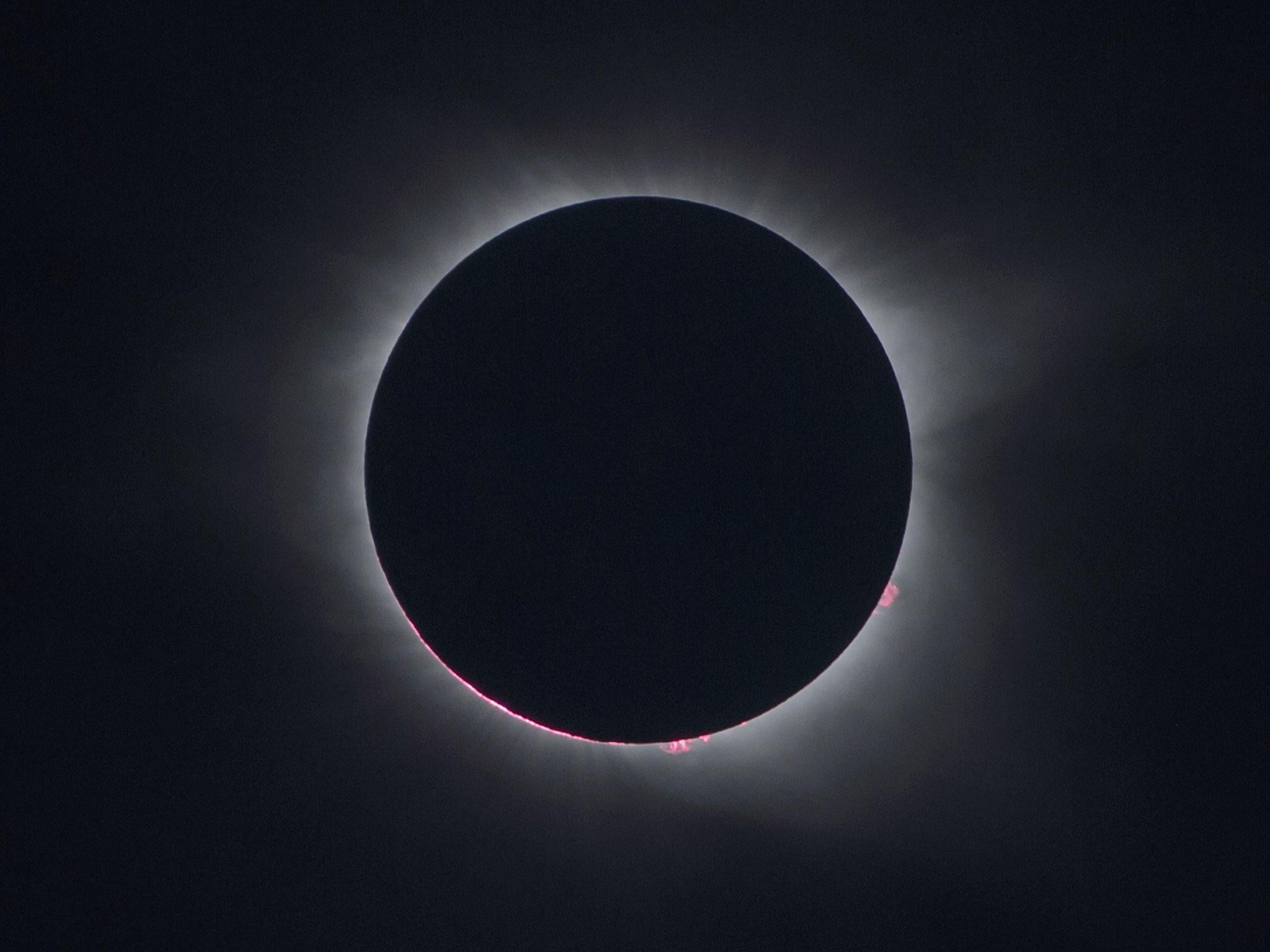What is a solar eclipse and why are they important?
Just don't make the same mistake as President Trump

There’s nothing like a good solar eclipse to distract the news agenda from the misery of global events, whether it’s Donald Trump looking straight at it without any protective eyewear, or other Americans swapping said protective eyewear to instead squirt suncream in their eyes.
Seven million-plus people are estimated to have watched the event as it swept across the US from Oregon to South Carolina in August this year, but how many of them actually know what a solar eclipse is?
A solar eclipse is when the moon moves between the sun and the Earth so that a shadow is cast onto Earth because the moon blocks the light of the sun.
There are also three types of solar eclipse, the first of which, a total solar eclipse, is what Americans were treated to this year.
A total solar eclipse occurs only when the sun, moon and Earth are in a direct line, so is only visible from a small area on Earth - from the centre of the moon’s shadow. The sky becomes dark, as if it were night.
A partial solar eclipse is when the sun, moon and Earth aren’t exactly lined up, which results in the sun appearing to have a shadow across part of its surface.
The third type, an annular solar eclipse, creates a dark ring around the moon. It occurs when the moon is further away from Earth, so appears smaller and does not block out the sun completely.

The crucial safety advice, which may have not reached the White House, is that looking directly at the sun during a solar eclipse can damage your eyes.
According to Associated Press, the 2017 total solar eclipse was the “most-observed and most-photographed eclipse in history”.
The next total solar eclipse anywhere on Earth will be in South America in 2019, but Europeans will have to wait until 2026. Even then, Brits may have to travel to Iceland, Greenland or northern Spain to get a proper glimpse.
What about lunar eclipses?
A lunar eclipse is when the Earth moves between the sun and the moon. We can see the moon at night because it reflects light from the sun, so when the Earth blocks this light, it causes a lunar eclipse.
A total lunar eclipse happens when the sun and the moon are aligned on either side of Earth.
The moon appears red because the small amount of sunlight that reaches the moon goes through the Earth’s atmosphere, which filters out most of the blue light.
Unlike solar eclipses, lunar eclipses usually last hours and it is safe to look directly at them.
But why should we care?
Eclipses are not just simply brief spectacles for us to gaze at in awe, but important events used to study the Earth and the moon.
Centuries ago, people discovered the shape of the Earth was round by observing the moon during an eclipse, and scientists are still using eclipses to study the moon’s surface in detail.
This article has been updated. It was originally published in December 2017.
Join our commenting forum
Join thought-provoking conversations, follow other Independent readers and see their replies
Comments
Bookmark popover
Removed from bookmarks